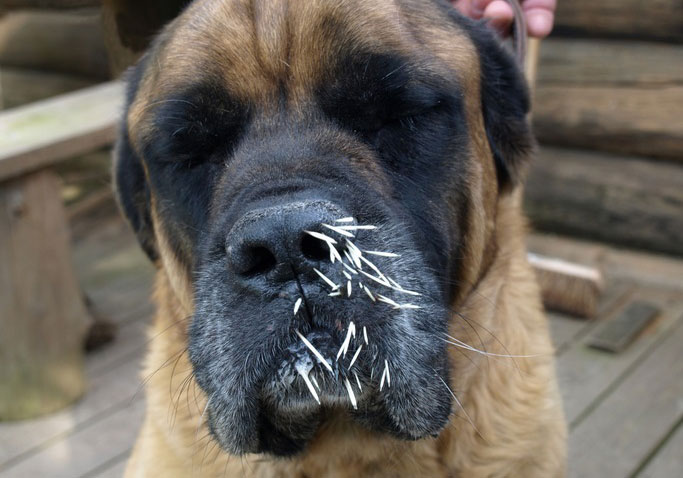Seizures – How Dogs & Cats Can Be Affected
 Seeing your pet seizure can be a very unpleasant, stressful, and frightening event. Here is some helpful information on what to look for, and what to do if your pet has a seizure.
Seeing your pet seizure can be a very unpleasant, stressful, and frightening event. Here is some helpful information on what to look for, and what to do if your pet has a seizure.
What is a seizure?
A seizure is a sudden, disorganized over-activity of the brain cells and their connections to one another. This can range from a localized, short seizure event to a widespread, lengthy event. There are multiple causes for a seizure that include but are not limited to: epilepsy, tumours, trauma, electrolyte imbalances, kidney or liver disease, low blood sugar, and toxin ingestion. Seizures are more common in dogs than in cats, and certain breeds of dogs are more prone to seizures than others.
Most seizures have three phases:
- Pre-ictal (behaviours prior to the seizure). In the pre-seizure phase, the animal is restless, acting oddly, or in a deep sleep.
- Ictal (the actual seizure). The seizure phase will vary. A small “petit-mal”/focal seizure may be nothing more than a facial twitch, biting at the air, stiffness in one limb, or staring off into space. A large “grand-mal” seizure is much more dramatic. Typically, the unresponsive animal is on their side with the legs stretched out stiffly and paddling. There is often frothing at the mouth as well as urination and defecation.
- Post-ictal (behaviours after the seizure). In the post-seizure phase, the animal is often disorientated, hungry, temporarily blind, and may vocalize.
All phases can be of varying length.
What can I do if my pet seizures?
- During a grand-mal seizure, things happen quickly. Try to peek at the clock to time the seizure if possible.
- As some animals become aggressive during a seizure and may bite, ensure your own personal safety by avoiding the mouth (in addition, they are not at risk of swallowing their tongue, do not try to put anything in their mouth).
- Protect the pet from injuring itself before and/or after the seizure, from hazards such as water, falling down stairs, and off of furniture.
- Do not try to keep them still or hold them down, let the seizure complete its course.
- If a seizure lasts longer than 3 – 4 minutes, emergency care should be sought by your veterinarian immediately, as lengthy seizures can lead to long term health deficits.
- Animals that seizure for longer than 3 minutes may become very hot, cool the pet with a damp cool cloth on the belly, ears, and paws.
If your pet experiences a seizure, it is recommended to have your pet examined by a veterinarian, especially after the first event. A physical exam as well as laboratory testing and/or imaging is used to help diagnose and treat the underlying cause. If the seizure occurs after regular business hours and your pet requires emergency medical attention, there are several emergency clinics throughout the city that are available after-hours.
– Article by Dr. Travis Foster, DVM – Dr. Foster is the owner of the MacTaggart Veterinary Clinic and has over 14 years of experience practicing Veterinary Medicine.
Recommended Posts

Porcupine Quills in Dogs … Oh My!
July 09, 2017

Obesity in Pets
January 11, 2017

Senior Pets – Ways to Help Fido in His Later Years
June 08, 2016

